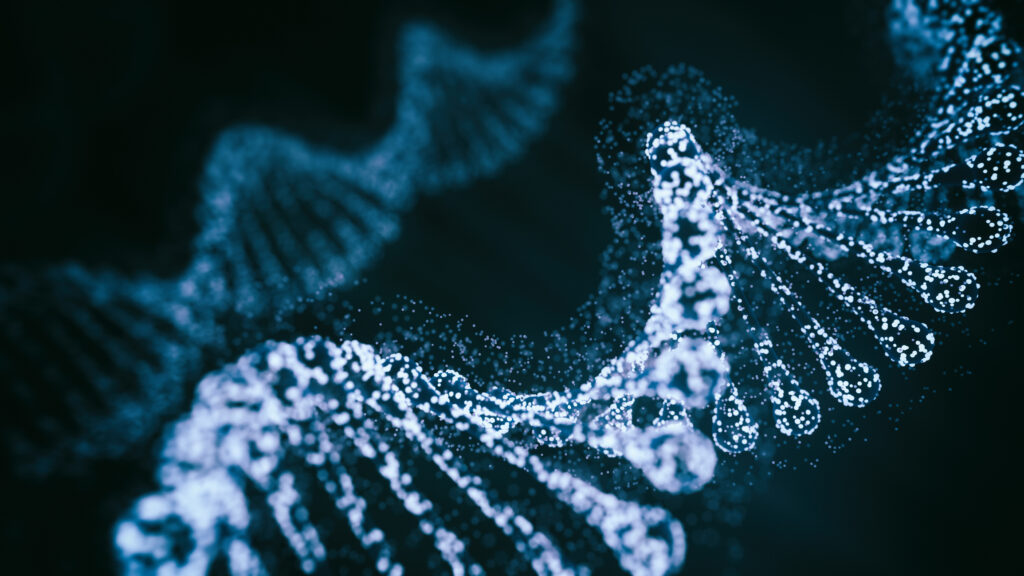
Here’s what we’ll cover in this blog post:
- What gene editing is
- How it works
- How CRISPR-Cas9 is influencing sickle cell treatment
- How it could change healthcare & longevity
Gene editing may sound like a distant promise, but the reality is that gene editing is already changing lives in hospitals across America.
The scientific community has been celebrating this technology for its potential to prevent age-related diseases and improve our cellular resilience—all with DNA-level precision. Soon, it may be widely available to help add extra healthy years to millions of people’s lives.
So, what exactly is gene editing, and how can it revolutionize the way we approach health and wellness?
What Is Gene Editing?
Gene editing describes the process of directly modifying our genes to alter and improve their function. Though gene editing has various uses outside of medicine , its main use in humans is to treat diseases.
To say that gene editing works at a cellular level isn’t exactly true. In fact, genes are much smaller than cells. Genes make up our DNA, which is in every chromosome of every nucleus of every cell in our body. That means they inspire just about everything that happens in our body, including age-related diseases.
Essentially, gene editing allows scientists to change disease-carrying gene variants to healthy variants. This could help to not only treat age-related diseases, but prevent them as well.
How Does Gene Editing Work?
Gene editing works by introducing enzymes to our genes that remove disease-carrying variants and replace them with healthy variants.
Scientists engineer these enzymes with blueprints of healthy genes. This way, the enzymes work on their own to rebuild the gene into a healthy variant.
Think of gene editing less as surgery, and more as therapy for your genes. The idea is to treat sick genes with medicine, or healthy genes engineered by scientists. With the right medicine, genes can naturally heal themselves, potentially preventing the spread of certain diseases carried by sick genes.
There are several different methods of gene editing, including zinc finger nucleases (ZFN) and restriction enzymes. Each of these methods allows for precise alterations within the gene, so scientists can correct defective genes, introduce beneficial ones, or even remove harmful sequences altogether.
The most popular method, though, is CRISPR-Cas9, which helped win the 2020 Nobel Prize in Chemistry. Now, CRISPR-Cas9 is helping to make this cutting-edge procedure more accessible.
CRISPR-Cas9 is one of the most cost-effective gene editing methods, allowing scientists to more precisely edit gene variants at a lower cost. As a result, CRISPR-Cas9 helped champion the first FDA-approved gene editing treatment.
How Is Gene Editing Used Today?
Gene editing is starting to inspire treatments like Casgevy, which the FDA approved in 2023 for the treatment of sickle cell anemia. Casgevy is the first gene editing therapy to be approved by the FDA, and the first to use CRIPSR-Cas9 technology.
Casgevy was shown to reduce sickle cell episodes for at least a year in over 93% of patients. Nine US hospitals have since chosen to provide Casgevy to sickle cell patients, including the Children’s National Hospital in Washington, D.C. and the Boston Medical Center. More are likely on the way as medical directors await news of Casgevy’s success.
CRISPR-Cas9 is also inspiring researchers to find similar therapies for age-related conditions like heart disease and cancer. Part of this research is also illuminating new theories on these diseases, helping scientists better understand disease biology. As research progresses, we may soon see this technique treat or even prevent all but the rarest of diseases.
Gene Editing & Longevity
If gene editing becomes a widely available treatment option, age-related diseases could soon become a thing of the past.
Technologies like CRISPR-Cas9 could help healthcare providers shift focus to preventing diseases before they develop, rather than treating symptoms after the disease has already developed.
The ability to correct or alter genes at their source enables doctors to directly treat the genetic foundations of diseases. Making this technology more cost-effective could see diseases removed before they spread, potentially reducing our reliance on long-term medication and invasive procedures.
Imagine removing cancerous genes that could cause breast cancer, or preventing inherited diseases like cystic fibrosis before they develop. That’s the future that researchers envision, and it’s close to becoming a reality.
But that doesn’t mean we can sit back and turn to unhealthy habits. We shouldn’t assume that doctors can simply edit our genes back to optimal health. Gene editing isn’t our get-out-of-disease-free card, so we should think of it as a complement to a healthy lifestyle.
While researchers work to develop more therapies, we still have healthy lifestyle choices in our longevity toolkit. Healthy diet, regular exercise, good sleep, and low stress are all great ways to minimize our risk of disease and add healthy years to our life. By using the tools we have available to take control of our health, we may not need gene editing in the first place!
Note: The above statements have not been evaluated by the Food and Drug Administration. This product is not intended to diagnose, treat, cure, or prevent any disease.
